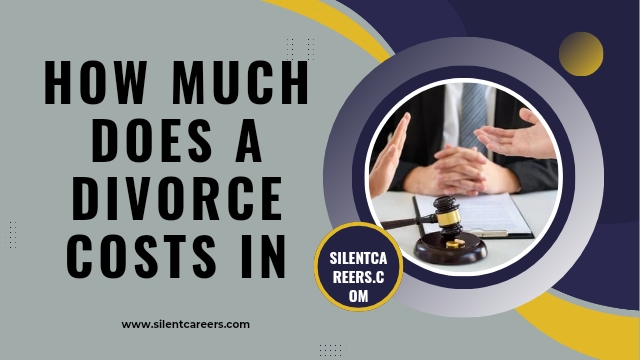
A prescriptive easement allows someone to legally use another’s property without owning it, established through continuous, open, and hostile use over a statutory period. Unlike adverse possession, which grants actual ownership of the land, a prescriptive easement grants only usage rights.

What is a prescriptive easement in real estate?
A prescriptive easement is a right to use someone else’s property, acquired through continuous and open use over a specific period, without the owner’s permission. This use must be adverse (against the owner’s interests), visible, and uninterrupted for the statutory period defined by local laws.
A prescriptive easement is a legal right to use someone else’s property in a specific way, acquired through long-term, uninterrupted use. It’s essentially gaining permission by using the land without the owner’s consent for a certain period as defined by state law.
Imagine a shortcut across a neighbor’s yard that everyone uses for years. If the neighbor doesn’t object, continued use can grant a prescriptive easement, allowing people to keep using the shortcut legally.
What Is Adverse Possession in real estate?
Adverse possession is a legal doctrine that allows a person to claim ownership of land under certain conditions. To acquire property through adverse possession, the claimant’s possession of the land must be:
- Hostile: Without permission from the true owner.
- Actual: Physical presence on the land, using it as a property owner would.
- Open and Notorious: The possession is obvious to anyone, including the rightful owner.
- Exclusive: The claimant is not sharing control of the land with others (excluding the public).
- Continuous: The possession must be uninterrupted for a statutory period, which varies by jurisdiction.
If these conditions are met for the required period, the claimant may gain legal title to the property, despite not holding the original deed.
Examples of Adverse Possession and Prescriptive Easement Cases
Here are examples of adverse possession and prescriptive easement cases:
Adverse Possession
- Howard v. Kunto (Washington, 1970): In this case, Howard claimed ownership of a parcel of land that Kunto was occupying. Kunto had been using the property continuously and openly for the statutory period required by Washington state law. The court ruled in favor of Kunto, recognizing his claim to the land through adverse possession because his use met all the required conditions.
- Ewing v. Burnet (U.S. Supreme Court, 1837): Ewing claimed ownership of a property in Cincinnati based on his adverse possession. The Supreme Court ruled in his favor, stating that he had openly and continuously possessed the land for more than the required statutory period.
Prescriptive Easement
- Applegate v. Ota (California, 1983): Applegate sought a prescriptive easement for a driveway that had been used continuously and openly for over 20 years. The court granted the easement, recognizing that the use met the criteria of being open, notorious, continuous, and adverse.
- Felgenhauer v. Soni (California, 2004): Felgenhauer claimed a prescriptive easement for a pathway that had been used without the owner’s permission for more than five years. The court upheld the claim, noting that the use was open, notorious, and continuous for the statutory period.
These cases illustrate how courts apply the principles of adverse possession and prescriptive easements, focusing on the nature and duration of the use, as well as the visibility and exclusivity of the claimant’s actions.
Prescriptive Easement vs. Adverse Possession
Both prescriptive easement and adverse possession involve acquiring rights to use or own property through prolonged, continuous use without the owner’s permission. However, they differ in the rights they confer and the conditions under which they are acquired.
Prescriptive Easement
- Definition: A legal right to use another person’s property.
- Purpose: Typically for access or utility purposes, such as pathways, driveways, or utility lines.
- Conditions:
- Open and Notorious: The use must be visible and obvious to anyone, including the property owner.
- Continuous and Uninterrupted: The use must occur without significant interruption for a statutory period, which varies by jurisdiction.
- Hostile: Without the owner’s permission.
- Outcome: Grants the right to use the property in a specific way but does not transfer ownership of the land.
Adverse Possession
- Definition: A legal doctrine that allows a person to claim ownership of land.
- Purpose: To transfer full ownership of the property.
- Conditions:
- Hostile: Without the owner’s permission.
- Actual: Physical presence on the land, using it as an owner would.
- Open and Notorious: The possession must be visible and obvious to anyone, including the rightful owner.
- Exclusive: The claimant must not share control of the land with others, excluding the public.
- Continuous and Uninterrupted: The possession must be continuous for a statutory period, which varies by jurisdiction.
- Outcome: Transfers full legal title of the property to the claimant.
Key Differences
- Scope of Rights:
- A prescriptive easement grants the right to use the property in a specific way, while adverse possession grants full ownership of the property.
- Type of Use:
- Prescriptive easements often involve limited uses, such as crossing the property, whereas adverse possession involves full control and use of the property.
- Legal Effect:
- Prescriptive easements add a right to the property without changing ownership, whereas adverse possession results in a change of ownership.
Read more: Easement in Gross: Definition, Example, Vs. Easement Appurtenant
Prescriptive Easement Claim Requirements
To successfully claim a prescriptive easement, the claimant must meet several specific requirements, which can vary slightly depending on the jurisdiction. Generally, the following conditions must be satisfied:
- Open and Notorious Use:
- The use of the property must be visible and apparent, so the owner is, or should be, aware of it.
- It cannot be secret or hidden; it must be obvious to anyone, including the property owner.
- Adverse or Hostile Use:
- The use must be without the permission of the property owner.
- It must be against the owner’s interests, meaning the use is without the owner’s consent and without any legal right.
- Continuous and Uninterrupted Use:
- The use must be continuous over a statutory period, which varies by jurisdiction (often between 5 to 20 years).
- The use must not be interrupted by the owner or by the claimant’s voluntary abandonment of the use.
- Exclusive Use (in some jurisdictions):
- The use is by the claimant and not by the general public.
- The claimant’s use of the property is exclusive to them or their predecessors in interest.
- Actual Use:
- The claimant must physically use the property in a manner typical of the claimed easement (e.g., using a path as a driveway).
Example Case
Example: MacDonald Properties, Inc. v. Bel-Air Country Club (California, 1977)
In this case, MacDonald Properties claimed a prescriptive easement over a roadway through the Bel-Air Country Club. The court ruled in favor of MacDonald Properties because their use of the roadway was open, notorious, adverse, continuous, and for the statutory period required by California law.
Important Considerations
- Statutory Period: The specific duration of use required to claim a prescriptive easement varies by jurisdiction.
- Tacking: In some cases, successive users can combine their periods of use (known as “tacking”) to meet the statutory period, provided there is privity (a legal connection) between them.
- Defensive Nature: A prescriptive easement claim is typically defensive, meaning it arises as a response to an attempt by the property owner to prevent the use.
To determine the specific requirements and statutory period for a prescriptive easement claim in a particular jurisdiction, it is advisable to consult local laws or seek legal advice.
Adverse Possession: What Not to Do
When attempting to acquire property through adverse possession, there are certain actions and behaviors that can undermine the claim. Here are things to avoid:
What Not to Do in Adverse Possession
- Seek Permission from the Owner:
- Asking for or receiving permission from the property owner to use the land nullifies the “hostile” requirement. Adverse possession requires that the use is without the owner’s consent.
- Be Inconsistent in Use:
- Use of the property must be continuous and uninterrupted for the statutory period. Sporadic or intermittent use will not meet this requirement.
- Hide or Conceal Use:
- The use must be open and notorious. If the use is hidden or secretive, the owner might not become aware of it, which fails the requirement of putting the owner on notice.
- Share Possession with the Owner:
- The possession must be exclusive. If the owner or others use the property along with the claimant, this may defeat the claim of exclusive possession.
- Abandon the Property:
- Leaving the property or ceasing to use it for extended periods can interrupt the continuous possession required for adverse possession.
- Ignore Local Laws and Regulations:
- Each jurisdiction has specific requirements and statutory periods for adverse possession. Ignorance of these laws can lead to a failed claim.
- Fail to Pay Property Taxes (in some jurisdictions):
- In some places, paying property taxes on the land is a requirement for adverse possession. Failure to do so can invalidate the claim.
- Use Force or Violence:
- Possession must be peaceable. Using force or violence to take or maintain possession can disqualify the adverse possession claim.
- Misrepresent or Commit Fraud:
- Fraudulent actions or misrepresentations regarding the use or ownership of the property can invalidate the adverse possession claim.
- Disregard the Statutory Period:
- The adverse possession must last for the full statutory period required by the jurisdiction, often ranging from 5 to 20 years. Prematurely claiming ownership before this period elapses will not be successful.
Example Scenario
Imagine someone, Alex, wants to claim a piece of land through adverse possession. Here’s what Alex should avoid doing:
- Not Seeking Permission: Alex shouldn’t ask the rightful owner if they can use the land.
- Consistent Use: Alex must not use the land only occasionally; their use must be regular and consistent.
- Open Use: Alex should not hide their use of the land; it should be apparent to others.
- Exclusive Use: Alex must not allow the rightful owner or others to use the land simultaneously.
- Continuous Use: Alex shouldn’t leave the land for extended periods.
- Understanding Laws: Alex should be aware of and comply with local adverse possession laws and requirements.
By avoiding these pitfalls and understanding the specific requirements for adverse possession in their jurisdiction, a claimant can better position themselves for a successful adverse possession claim.
‘Tacking’ the Time Requirement
In the context of adverse possession, “tacking” refers to the process by which successive periods of possession by different individuals can be combined to meet the statutory period required for an adverse possession claim. This is allowed under the condition that there is privity between the successive possessors. Privity in this context means a legal relationship between the parties, such as a transfer of possession through a deed, will, or other means that shows a direct link in the chain of possession.
Key Points About Tacking
- Privity Requirement:
- Privity can be established through voluntary transfers of the property interest, such as by sale, inheritance, or gift.
- There must be a reasonable connection between the possessors, demonstrating a continuity of possession.
- Continuous and Uninterrupted Possession:
- The combined periods of possession must be continuous and without interruption.
- There should be no gaps in the possession timeline that would break the continuity required by the statutory period.
- Same Nature of Possession:
- The nature of the possession by successive possessors must be consistent. If the first possessor used the property openly, notoriously, and adversely, the succeeding possessor must do the same.
Example Scenario
Imagine that Bob possesses a piece of land openly, notoriously, and without the owner’s permission for 5 years. Bob then sells his interest in the land to Carol, who continues to possess the land in the same manner for another 10 years. If the statutory period for adverse possession in their jurisdiction is 15 years, Bob and Carol can “tack” their periods of possession together to meet the requirement.
Example Case
Howard v. Kunto (Washington, 1970):
- In this case, the court allowed tacking when Kunto and his predecessors in interest had collectively possessed the land continuously for the statutory period. The possession was continuous because the property was used consistently during summer months by both Kunto and his predecessors.
Legal Considerations
- Jurisdictional Differences: The rules and requirements for tacking can vary by jurisdiction, so it’s important to understand local laws.
- Documentary Evidence: Legal documents that show the transfer of possession and establish privity are critical in proving tacking in court.
- Good Faith: Some jurisdictions may consider the good faith of the possessors, although this is not always required for adverse possession.
By ensuring privity and maintaining continuous, uninterrupted, and adverse possession, successive possessors can effectively tack their periods of possession to satisfy the statutory period required for adverse possession.
More Resources on Easements
Certainly! Here are some resources where you can learn more about easements, including prescriptive easements and other types:
Books
- “The Law of Easements and Licenses in Land” by Jon W. Bruce and James W. Ely Jr.
- A comprehensive guide to understanding easements, their creation, and their use.
- “Thompson on Real Property” by David A. Thomas
- Offers detailed analysis on a wide range of real property issues, including easements.
- “Powell on Real Property” by Michael Allan Wolf
- This multi-volume treatise covers various aspects of real property law, including easements.
Online Resources
- Legal Information Institute (LII) – Easements:
- LII Easements
- Provides a thorough overview of easements, their types, and legal implications.
- FindLaw – Easements:
- FindLaw Easements
- Offers practical information and explanations on different types of easements and related issues.
- Nolo – Easements:
- Nolo Easements
- A user-friendly resource that explains easements in plain language, useful for both laypeople and professionals.
Legal Journals and Articles
- American Bar Association (ABA) Journal Articles on Easements:
- The ABA publishes articles and case studies on real property law, including easements.
- Law Reviews and Legal Journals:
- Many law reviews and legal journals publish articles on easements. You can access these through databases like Westlaw, LexisNexis, or JSTOR.
Educational Websites
- Coursera or edX:
- Look for courses on real estate law, which often cover easements as part of their curriculum.
- Khan Academy – Real Estate and Property Law:
- Offers educational videos and articles explaining various real estate concepts, including easements.
Legal Research Databases
- Westlaw:
- Comprehensive legal research database with access to case law, statutes, and secondary sources on easements.
- LexisNexis:
- Another robust legal research platform offering extensive resources on easements and other property law topics.
Professional Organizations
- American Land Title Association (ALTA):
- Offers resources and publications on issues related to land titles, including easements.
- American Planning Association (APA):
- Provides resources for planners that include discussions on easements and land use.
Government and University Websites
- State Bar Associations:
- Many state bar associations offer resources and continuing legal education (CLE) courses on easements.
- University Law Libraries:
- University law libraries often have extensive collections of books, journals, and other resources on property law, including easements.
Practical Guides
- “Real Estate Law (Real Estate for Professionals)” by Peter E. Smirniotopoulos:
- This book provides practical insights into real estate law, including easements.
- “Neighbor Law: Fences, Trees, Boundaries & Noise” by Emily Doskow:
- Offers practical advice on dealing with common easement issues that arise between neighbors.
These resources should provide a comprehensive understanding of easements, their legal implications, and practical considerations.
Get Professional Legal Help With a Prescriptive Easement
If you’re dealing with a prescriptive easement issue, consulting a qualified real estate attorney is crucial. An attorney can help you understand your rights, gather necessary evidence, and navigate complex legal procedures.
They can assist in proving the continuous, open, and hostile use required for a prescriptive easement claim or defend against one if you’re a property owner. Professional legal advice ensures compliance with local laws and increases the likelihood of a favorable outcome. Contact a local real estate attorney with experience in property disputes to get tailored guidance and protect your interests effectively.
Is An Easement By Prescription A Deal Breaker When You’re Purchasing A Property?
An easement by prescription can be a deal breaker when purchasing a property, depending on its impact. If the easement significantly restricts the use or value of the property, such as limiting development or access, it may deter buyers.
However, if the easement has minimal effect or is properly documented and disclosed, buyers might still proceed with the purchase. It’s essential to have a thorough property inspection and consult with a real estate attorney to understand the implications of any prescriptive easements and make an informed decision.
Are Prescriptive Easements Good or Bad?
Prescriptive easements can be viewed in both positive and negative lights, depending on the perspective and circumstances:
Benefits of Prescriptive Easements:
- Access and Utility: They can provide necessary access to landlocked properties or utilities, benefiting owners and promoting efficient land use.
- Legal Clarity: They offer a legal framework for resolving disputes over long-standing, continuous uses of property, providing certainty for both parties involved.
- Historical Use Recognition: Recognizes and protects longstanding uses of property that have become essential or customary over time.
Concerns with Prescriptive Easements:
- Property Owner Disadvantage: They can diminish the property owner’s control over their land and limit future development or use options.
- Legal Complexities: Claiming or defending against prescriptive easements can involve legal costs, uncertainty, and potential conflicts between parties.
- Impact on Property Value: Depending on the nature of the easement, it could affect property marketability and value, especially if it restricts desired uses.
In summary, prescriptive easements serve to balance property rights with community needs but require careful consideration to weigh the benefits against potential drawbacks when dealing with property transactions or disputes.
How To Avoid Prescriptive Easements
To avoid potential issues with prescriptive easements, property owners can take proactive steps:
- Regular Property Inspections: Regularly inspect the property to identify any unauthorized uses or encroachments by others.
- Clear Communication: Clearly communicate property boundaries and use permissions to neighbors and others who may access the property.
- Signage and Fencing: Clearly mark boundaries with signage or fencing to indicate private property and discourage unauthorized use.
- Regular Use of Property: Continuously use the property yourself to prevent others from claiming adverse possession or prescriptive easements.
- Monitoring and Documentation: Keep records of property use, maintenance, and any interactions with individuals using the property without permission.
- Legal Advice: Consult with a real estate attorney to understand local laws and regulations regarding prescriptive easements and take preemptive legal measures if necessary.
By staying vigilant, communicating clearly, and understanding local legal requirements, property owners can reduce the risk of prescriptive easement claims and maintain control over their property.








